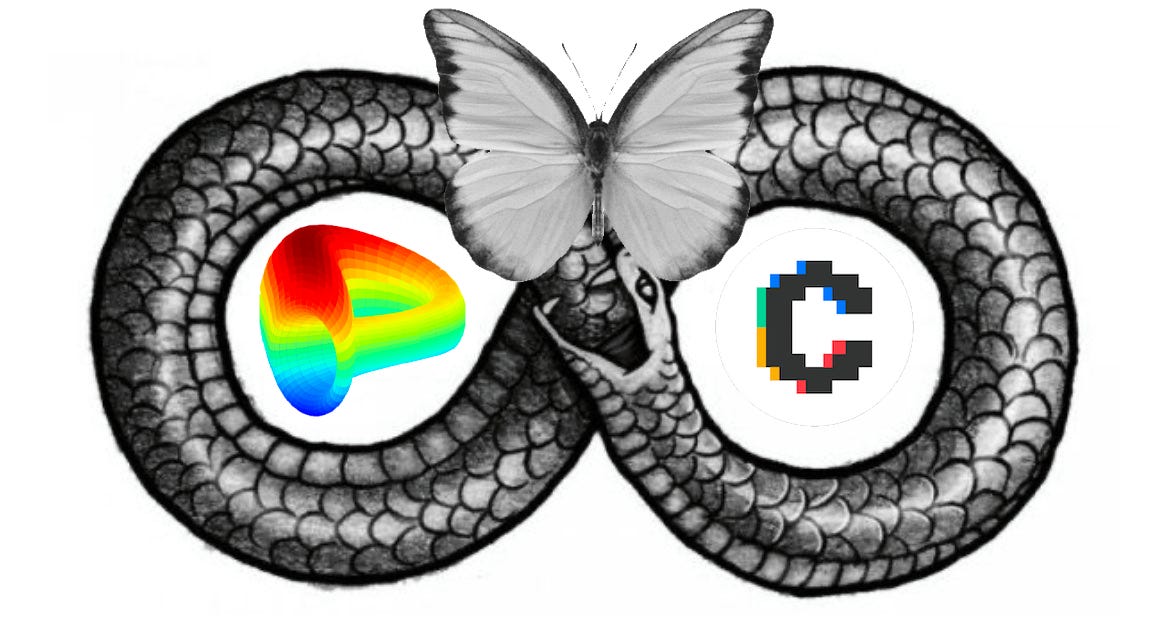Curve’d Labyrinth (Part 1): Purpose of Existence and Origins of War
DeFi protocols have been in a major war with each other in order to acquire a deeper liquidity for their stablecoins. Curve finance’s voting escrow (ve) token economics has played a major role in brewing up this narrative. In this article we try to decipher the role of different components involved in this so-called war, and what fuel do they add in this fire!

World War II witnessed a multitude of innovations along with rampant destruction and bloodbath. These innovations mostly came from nations actively involved in the war. A cipher device ‘Enigma’ was deployed by one such nations to encrypt any form of crucial communication in their strategy. In an era, where the accessibility to crucial information on rivals was rare, it just made it more difficult (impossible actually)!
Now, the times have changed, but humans' desire to assert control over their surroundings remain unchanged (just an evolutionary trait!). It’s just the rules of the game (or war?) that have been changed. So what game are we talking about? The game of decentralized financial markets!
Whenever financial markets are talked about, liquidity - given to its role as a shock absorber - always stands as a matter of prime importance. In my last article on stablecoins I talked about how our desire for stability in a currency roots from our inherent desire for certainty. In this article, we are going to talk about how a byzantine network has been deployed to exhibit greater control over the system which ensures this stability.
You must have guessed it right, yeah it’s Curve finance!
There has been a lot of noise around Curve, and how digital wars have been going on to acquire most of the CRV. As a lot has been already written about Curve wars. Without focusing much on numbers, we shall talk about the underlying architecture which enables and fuels this war in this article. And in later parts, we shall conduct certain experiments which shall help us understand more about Curve’s long term sustainability as well as its resilience.
Curve by its very basic function is a decentralized exchange (dex) for stablecoins. Besides being a stablecoin dex, it serves a very important purpose. And that is by providing/renting stablecoin liquidity to various protocols to maintain their peg.
But, how do stablecoins maintain their peg? Well let’s suppose you are a small state interested in issuing your currency backed by gold (assets). As you have got 1 kilogram of gold, you issue 1000 coins each pegged to a gram of gold. As the population grows, you would either need to issue more currency, or demonetize and split the existing one. As the latter is rarely feasible, a better option would be to issue more. But you might face a problem here. Each coin would no longer be pegged to 1 gram of gold anymore, and hence the peg is broken.
Similarly to a state, we have stablecoin issuing protocols like Maker, LUNA, FRAX etc. whose stablecoins need to maintain a peg to 1 USD. In case the assets/asset pools backing them depreciate in value or balance, there's a high chance of their peg being broken. Either they keep incentivizing liquidity providers (LPs) for eternity or find a sustainable option? Can Curve solve this problem?
Curve, through its highly sophisticated tokenomics has managed to garner a stablecoin liquidity worth $17.24B consisting of multiple stablecoins from different protocols. By virtue of the versatility of stablecoin reserves on curve, there’s a versatility of reserves/algorithms backing these stablecoins. This blackhole of liquidity enables a wider space of circulation for them along with a better layer of security when it comes to maintaining the peg.
Now as curve’s purpose of existence is clear, we shall try to understand what exactly brings these ‘curve wars’ into existence. For that we shall go back to basic driving factors of any financial markets i.e. ‘demand’ and ‘supply’. In case of curve, the demand for deep stablecoin liquidity is fulfilled by LPs who regularly get their share of ‘protocol fee’ along with ‘$CRV emissions’. So, the demand and supply dynamics are complete here? There’s a little catch!
Every protocol wants a greater depth of liquidity for its stablecoin in order to have a lesser impact/slippage and a greater security for its peg. Just like any other decentralized protocol, curve also has a voting mechanism where veCRV holders (vote locked $CRV; non ERC20) get to vote for the emission gauge each pool gets every two weeks. So in order to get a greater share of liquidity, different protocols through a sophisticated mechanism - bribe the veCRV holders to vote for their stablecoin pools. Greater the $CRV emissions captured, the more attractive it becomes to other LPs.
Though this set out the ground for protocols to maximize their liquidity depth, it brought about a dilemma for LPs. Problem mainly roots from the nature of veCRV. It is an illiquid vote locked CRV which keeps decaying with the passage of time. And hence for maximum utilization/voting power - it has to be locked for a maximum period i.e. 4 years.
To take advantage of this construct and to make the process more flexible for LPs - enters another player ‘Convex’. It does so by leveraging DeFi’s composability. Convex is a DeFi protocol built to maximize $CRV holdings. But what problem does it actually solve? Convex helps $CRV holders by providing them with extra incentives in the form of $CVX in addition to curve’s protocol fee and a portion of $CRV rewards. You just have to convert your curve LP tokens for convex LP tokens and stake them on convex for no locking period. In this way, convex maximizes its voting power by maximizing its acquisition of curve assets along with a greater boost of curve emissions for the stakers.
But, now the question stands, what’s the strategy of convex in this so-called war. To understand this, let’s recall the vote locking mechanism of CRV to veCRV. Convex follows the similar procedure where you get vote locked CVX (vlCVX) with a staking period of just 16 weeks. This provides stakers with additional rewards in the form of cvxCRV along with voting power to decide gauges for pools on curve. Though the entry in convex ecosystem starts with curve LP tokens, $CRV can also be used for the same. It can be irreversibly converted to cvxCRV, which can be staked on convex to get rewards in the form of CVX, curve’s protocol fee and a part of convex LP’s CRV earnings.
And as if these increased incentives weren’t good enough, convex has a bribe system similar to that of curve through a special DeFi construct called Votium. In this way by working out the pain points of long term staking on curve along with increased rewards in the form of CVX and cvxCRV, convex has managed to acquire the majority of curve assets to emerge as a dominant player in the game.
So, do you think the game ends here? Think again! As this whole complex orchestra of increased incentives to curve and convex LPs was being conducted, here entered another player - ‘[REDACTED] Cartel’ aka BTRFLY. BTRFLY is basically an OHM fork which through a similar bonding mechanism is on a mission to maximize its curve and convex assets by luring users through discounted BTRFLY emissions. So if you have been milking the convex cow for all its rewards, here’s a supercow for you. You can further milk it for higher APYs. Though not much can be said about its success given to a lot of fud against OHM mostly attributed to its so called ‘ponzinomics’. It shall be interesting to see how BTRFLY manages to sustain this acquisition against the enormous inflation emitted by it.
Though protocols expect increased liquidity allocation in return for their bribes, it should be noted that in a free market there will always be someone to outbid you. And to keep this system sustainable, bribes shall forever be increasing. Value provided by allocation of increased liquidity should always be greater than the bribes. Can this multilayered byzantine really support the forthcoming pressure? What do the current statistics indicate? What happens when some of the components are affected adversely? In next few articles, by simulating the historical data of bribes, emissions and gauge weights, we shall try to answer these questions. We shall also study the reaction of this complex system using structural simulations by knocking out some important components.
So, buckle up. We are just getting started!
Resources:
Author is a Decentralized Finance (DeFi) researcher and analyst at Polygon with special emphasis on fundamentals, on-chain activity and social-media narratives. Their other interests include studying Attention Economy, Rumor Networks and Cognitive Design of Cryptocurrency Protocols. They like to do gardening, scroll twitter and explore different movie genres in their free time. They can be reached on twitter at ZeroK



